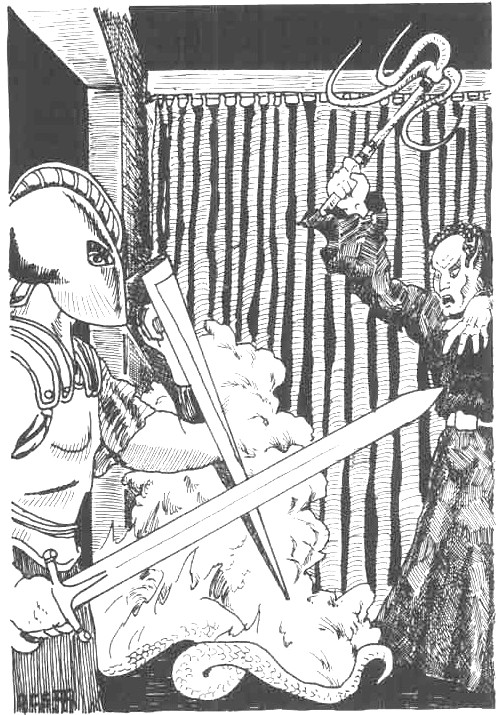Sages: Living on the very border of civilization and wilderness, the reclusive sage is a lifelong student of ancient lore. These eremites have unlocked the secrets of the empyrean and learned how to transcribe both arcane and divine magic into precise formulas. Sages prepare and cast spells exactly as a magic-user and they may also transcribe cleric spells into their spellbook, although due to their peculiar celestial equations they cannot prepare the same spell more than once at a time. Sages have the same restrictions on equipment and magical items as magic-users, but are far more bookish and will only pick up and use a weapon or magic item when pressed by immediate and dire necessity. Otherwise, sages fight, save and require the same number of experience points for each level as magic-users do. Additionally, sages have a superior ability to know fragments of ancient lore, and any elaborations a sage makes on such a piece of knowledge has a chance of being fairly accurate.
| Dice for Acc | Fighting | Spells & Levels | |
| Sages | umulated Hit | Capability | 1 2 3 4 5 6 |
| Recluse | 1 | Man | - - - - - - |
| Hermit | 1 + 1 | Man + 1 | 1 - - - - - |
| Hedge Wizard | 2 | 2 Men | 2 - - - - - |
| Wise Man | 2 + 1 | 2 Men + 1 | 2 1 - - - - |
| Shaman | 3 | 3 Men | 2 2 - - - - |
| Savant | 3 + 1 | 3 Men + 1 | 2 2 1 1 - - |
| Augur | 4 | Hero - 1 | 2 2 2 1 1 - |
| Scholar | 5 | Hero | 2 2 2 2 2 - |
| Magus | 6 + 1 | Hero + 1 | 3 3 3 2 2 - |
| Philosopher | 7 | Wizard | 3 3 3 3 3 - |
| Sage | 8 + 1 | Wizard | 4 4 4 3 3 - |







